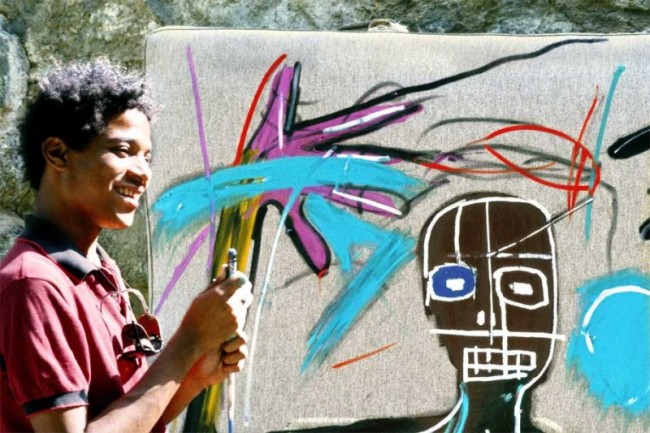The Radiant Child
The Feast and the Famish

Featuring: Jean-Michel Basquiat
By Robert Patrick
Jean-Michel Basquiat was, for all purposes, completely innovative and untraditional. The street artist would jab and swoosh his brush against whatever canvas he deemed appropriate, whether it be the wall of a building or a sheet of paper, to create loud and bombastic pieces of chaotic and aggressive art. Art aficionados in his time generally shirked his work as being too loud of abrasive, though cultural magnates such as Andy Warhol opted to work with him. The young artist was, to the dismay of everyone, dead at the age of 27 from a drug overdose. The amount of work the young artist left was monumental, however, with sheets of paper fluttering about with feverish colors and arching letters. Tamra Davis, the director of “The Radiant Child”, was a close friend of the befallen painter and wunderkind. Because she managed to shoot a revealing interview with the downtrodden painter, that hadn’t been revealed in some twenty-odd years since his death, she found a reason to create a beautiful film about her friend.
The movie, much like the life of Basquiat, is filled with flurries of spontaneous adrenaline and flickers of color. Davis pieces together archival footage of Basquiat, as he peacefully sprays paint over canvases, and cheerfully smiles like an adolescent child. From the grainy interview that Davis has had locked up of Basquiat over the years, the young artist seemed modest and doe-eyed, capable but chained by humility and friendliness. Different players in Jean-Michel’s life are interviewed, such as his girlfriends and several art impresarios, while they dust off the yellowed memories of an iconoclastic member of the New York community. Fab Five Freddy, adorned in his huge sunglasses, recollects experiences with Jean-Michel as he clasps his hands and smiles. There are plenty of telling interviews, stitched together with artisan intricacy, that make the documentary endlessly entertaining even if you had not previously heard of the influential artist.
Basquiat’s work, because of its unorthodox style, was marveled at by many people in the 1980s – Deborah Harry, of Blondie fame, purchased a painting from him during the infancy of his artwork. Jean-Michel managed to cascade words and letters across his paintings as if they were deftly drawn figures or objects. People regarded his painting style as free and inhibited, though, later in his career, he managed to be crippled by the stress of his own body of work. Davis, because of her connection to the figure in question, manages to construct and chisel a documentary out of her endearment for her crestfallen friend. You may think it is a little maudlin, especially because it isn’t objective, but the way she orchestrates the film is beautiful and, more importantly than anything, interesting.
In a year that has seen many great documentaries being released in succession (“Art of the Steal”, “The Tillman Story”, “Stonewall Uprising”, etc), “The Radiant Child” proposes that you take a look at a young artist, way ahead of his time, that fleshed out his world with block figures and inspired words. Most importantly, because of its source material, it is vital that Davis inoculate her film with the bubbling sound of the time; she slathers a mix of hip-hop and jazz over her movie in a way that gives the film a sort of much needed skeletal structure. Though the interviewees are appreciated and sincere, the face of Basquiat, illuminating his life with his own words, is the biggest drawing point to this picture. The way Jean-Michel softly speaks, in a tone that is more reserved and full of truthfulness, brings a needed chapter to a tragic life. Davis was wise to prop her previously unreleased footage of an artistic icon up for the whole world to see. Like all of us, Basquiat was confused and susceptible to pain. Unlike many of us, he was feverishly creative and without pause. You almost feel that there was a ticker in him, buried deep within his mind, that knew that he had better make all that he could before he passed.
There is a lot to be appreciated here, from the way the film shows much of his work to the way it reveals many of his words, that should be seen by all documentary or art enthusiasts. The strange and compulsive relationship that Basquait shared with Warhol is fascinating enough, but to see, with an eye you may have not had otherwise, the bulk of his world explained by his friends and colleagues is a sort of fine joy. “The Radiant Child” is a documentary that is sad and revealing; full of passion and intrigue.
4/5
